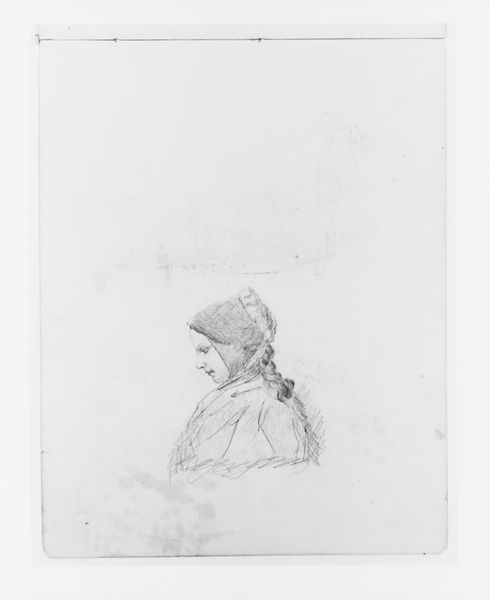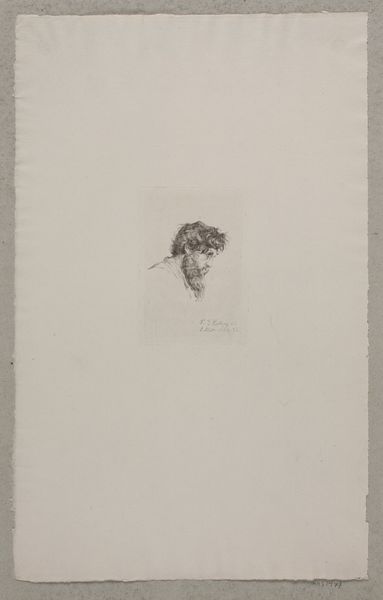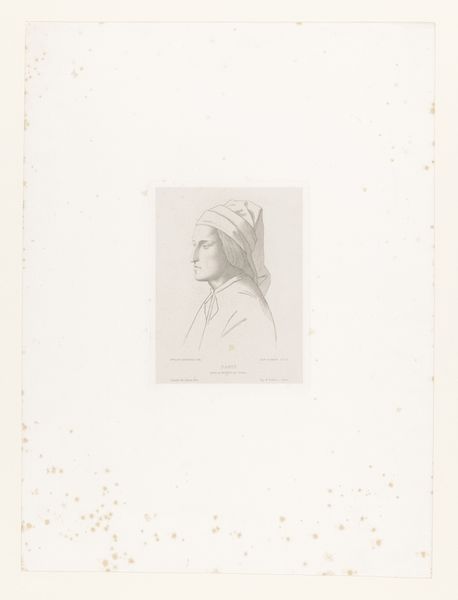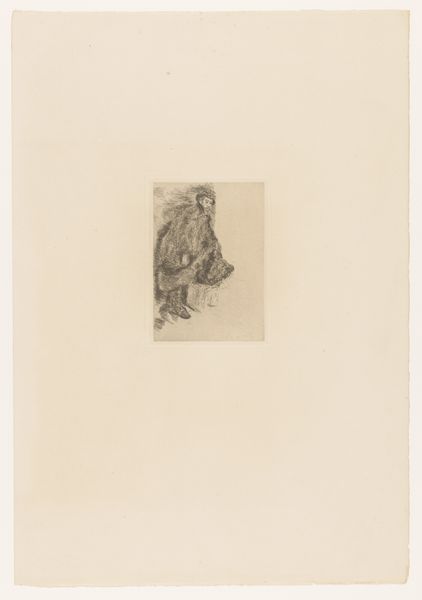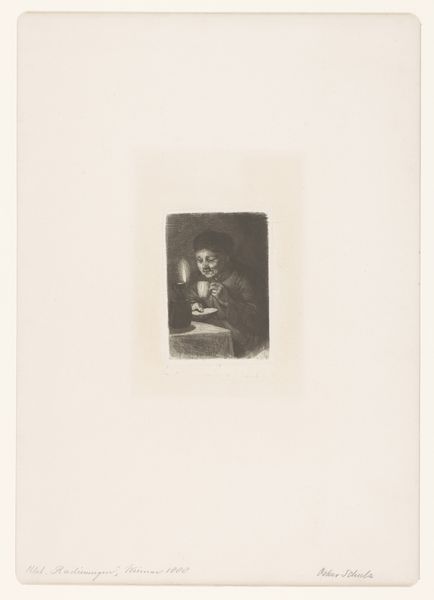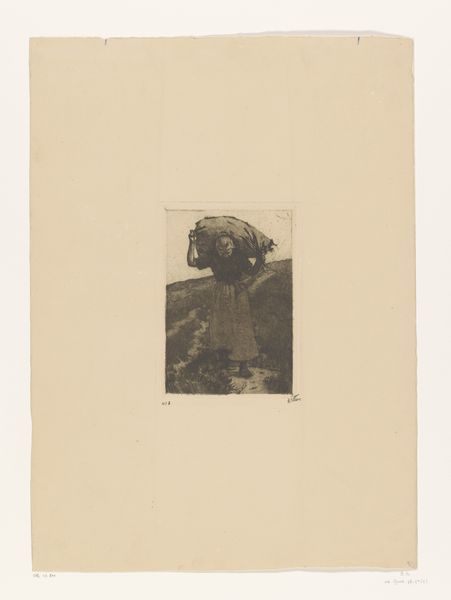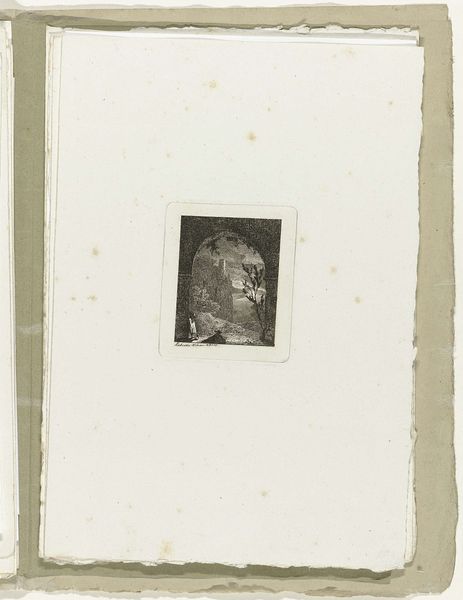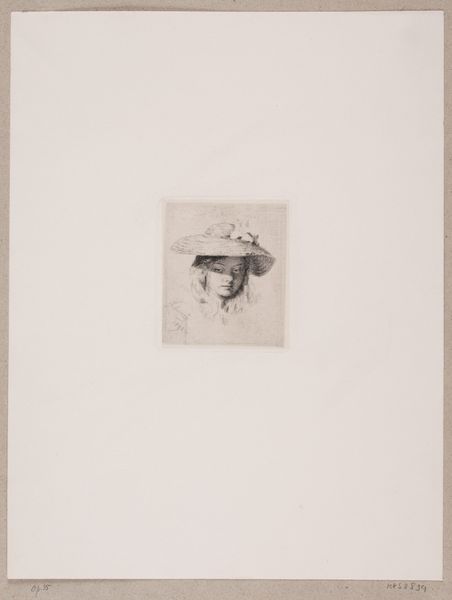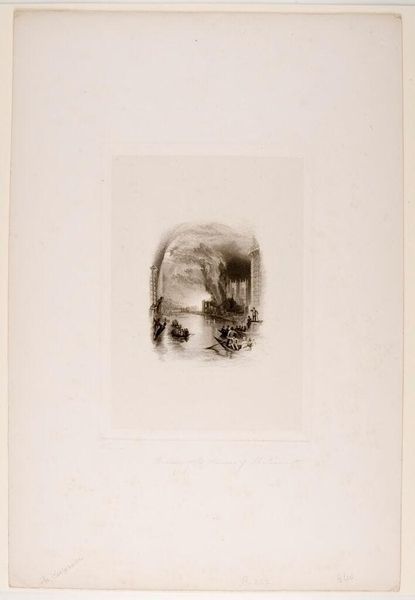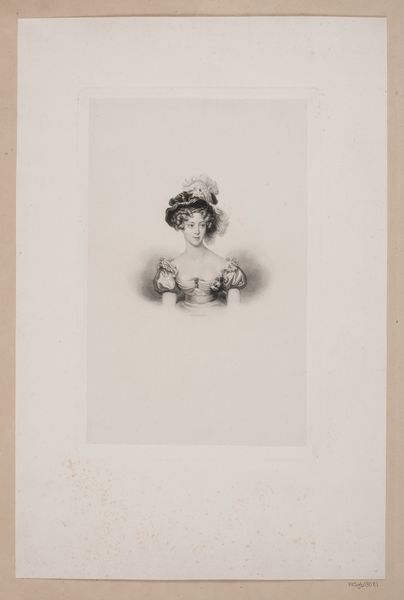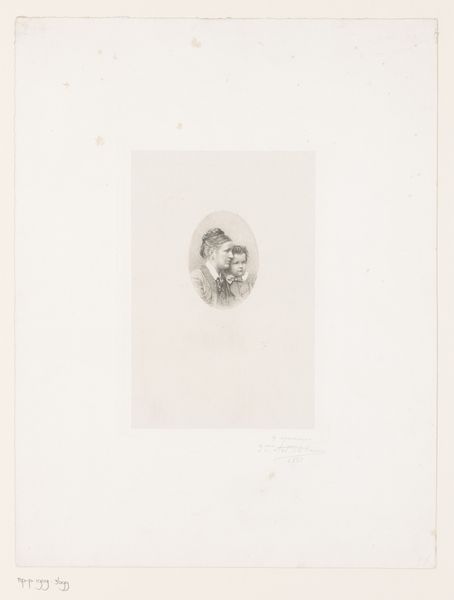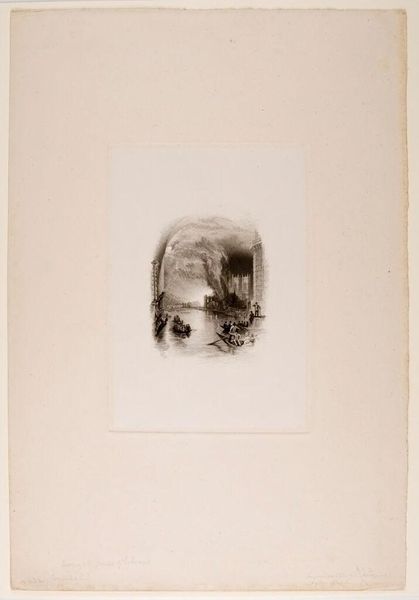
drawing, print, etching
#
portrait
#
drawing
# print
#
etching
#
figuration
#
academic-art
#
realism
Dimensions: height 33 cm, width 28 cm
Copyright: Rijks Museum: Open Domain
Curator: Let's consider "Ruit met een portret van Rembrandt," or "Rhombus with a portrait of Rembrandt," an etching made around 1850 by Servatius Johannes Melort. My first thought: quite diminutive! Almost like a little jewel in a vast expanse. What strikes you initially? Editor: The starkness of its making. An etching offers an intimate view into an iterative process – the layering of acids on the plate, the controlled erosion... It speaks of calculated effort. This feels quite studied, almost reverent in its labor. Curator: Indeed. This is no spontaneous sketch but a considered act of homage. Think of Rembrandt as this figure elevated almost to a saint. This portrait within the larger rhombus shape certainly adds another layer of symbolic enclosure. Do you find any specific aspect that resonates with the time it was made, almost two centuries after Rembrandt lived? Editor: Absolutely. By the mid-19th century, the Romantics had elevated artists, including masters such as Rembrandt, to a demi-god status. Reproducing his portrait as an etching makes his image more widely accessible. Also, let’s not forget the expanding print markets enabled these images to circulate like never before. Curator: Yes! In that light, seeing the face framed by what seems almost like a window shape reminds me how he became something of a looking glass to later generations. In this delicate piece we're able to gaze backward, perhaps seeing elements of ourselves reflected, too. Editor: Exactly, but not simply a sentimental reflection. The labor involved in replicating this image—the tools, materials, the physical act—it’s a concrete link to Rembrandt’s era. An index of artistic production bridging centuries. Curator: It’s fascinating to think that while so much time separated Melort from his idol, this etching serves as a timeless point of connection between these two artists through this portrait. It offers the suggestion that cultural memory can exist quite concretely in objects we see every day. Editor: I completely agree; this small-scale etching opens up larger considerations about artistry, cultural transmission, and, importantly, materiality. It leaves me thinking about the hand that guided the etching needle over a century after Rembrandt's passing.
Comments
No comments
Be the first to comment and join the conversation on the ultimate creative platform.
